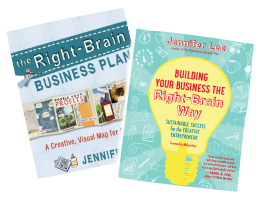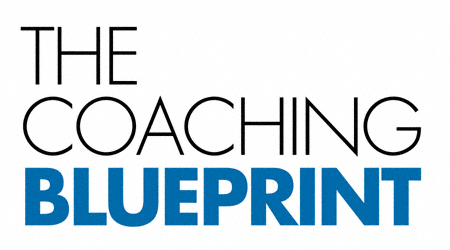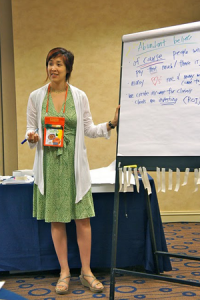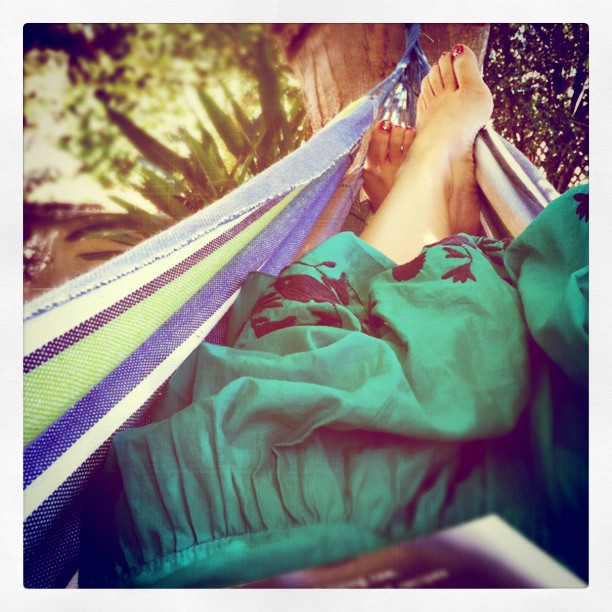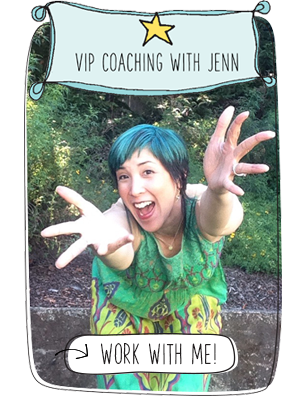Here’s a thought-provoking interview with creativity expert Michael Michalko author of the fabulous new book Creative Thinkering: Putting Your Imagination to Work. I’ve described it as “a gym for your genius and a playground for practicing creative problem solving, Creative Thinkering is equipped with innovative exercises to strengthen your intuition. Michael Michalko’s mind-bending tips and techniques invite fresh perspectives that lead to remarkable results.”
You can win a copy of the book by visiting the Right-Brain Business Plan Facebook Fan Page, becoming a fan, and adding a comment to the post about the giveaway.
About the Author: Michael Michalko is one of the most highly acclaimed creativity experts in the world. He has given speeches, workshops, and seminars on fostering creative thinking for clients ranging from Fortune 500 corporations — such as DuPont, Kellogg’s, General Electric, Kodak, Microsoft, Exxon, General Motors, Ford, AT&T, Wal-Mart, Gillette, and Hallmark — to associations and government agencies.
As an officer in the U.S. Army, he organized a team of NATO intelligence specialists and international academics in Frankfurt, Germany, to research, collect, and categorize all known inventive-thinking methods. His team then applied these methods to various new and old NATO military, political, and economic problems and produced an assortment of breakthrough ideas and creative solutions.
Michael later applied these creative-thinking techniques to problems in the corporate world with outstanding success. The companies he worked with were thrilled with the breakthrough results they achieved, and Michael has since been in the business of developing and teaching creative-thinking workshops and seminars for corporate clients around the world.
Children are naturally creative. Why do so many lose that talent as they grow older?
We were all born spontaneous and creative. Every one of us. As children we accepted all things equally. We embraced all kinds of outlandish possibilities for all kinds of things. When we were children we knew a box was much more than a container. A box could be a fort, a car, a tank, a cave, a house, something to draw on, and even a space helmet. Our imaginations were not structured according to some existing concept or category. We did not strive to eliminate possibilities, we strove to expand them. We were all amazingly creative and always filled with the joy of exploring different ways of thinking.
And then something happened to us, we went to school. We were not taught how to think, we were taught to reproduce what past thinkers thought. When confronted with a problem, we were taught to analytically select the most promising approach based on past history, excluding all other approaches, and then to work logically within a carefully defined direction towards a solution. Instead of being taught to look for possibilities, we were taught to look for ways to exclude them. It’s as if we entered school as a question mark and graduated as a period.
When you have a really tough challenge and can’t see the answer, what is your favorite technique for unlocking your brain?
When I am stonewalled, I just start typing “O peaceful gloom shrouding the earth” over and over and over. Eventually, typing this phrase over and over unlocks something in my brain and the ideas start flowing. It’s going through the motions of writing that un-sticks my mind.
Most people presume that our attitudes affect our behavior, and this is true. But it’s also true that our behavior determines our attitudes. Tibetan monks say their prayers by whirling prayer wheels on which their prayers are inscribed. The whirling wheels spin the prayers into divine space. Sometimes, a monk will keep a dozen or so prayer wheels rotating like a juggling act in which whirling plates are balanced on top of long thin sticks.
Many novice monks are not very emotionally or spiritually involved at first. It may be that the novice is thinking about his family, his doubts about a religious vocation or something else while he is going through the motions of spinning his prayer wheel. When the novice adopts the pose of a monk, and makes it obvious to himself and to others by playing a role, the brain will soon follow the role they are playing. It is not enough for the novice to have the intention of becoming a monk: the novice must act like a monk and rotate the prayer wheels. If one has the intention of becoming a monk and goes through the motions of acting like a monk, one will become a monk.
If you want to be an artist, and if all you did was paint a picture every day, you will become an artist. You may not become another Vincent van Gogh, but you will become more of an artist than someone who has never tried.
What makes a genius a genius?
Geniuses do not get their breakthrough ideas because they are more intelligent, better educated, more experienced, or because creativity is genetically determined. University of California Professor Dean Keith Simonton observed that creative thinking demands the ability to make novel combinations. If you examine most any idea, you will discover that the majority of ideas are created by combining two or more different elements into something different. Simonton’s conclusion about genius is “Geniuses are geniuses because they form more novel combinations than the merely talented.”
You talk about incubating thinking. What does that mean and how do we do it?
Incubation makes use of subconscious processing of information. It usually involves setting a problem aside for a few hours, days, or weeks and moving on to other projects. This allows the subconscious to continue to work on the original challenge. The more interested you are in solving the challenge, the more likely your subconscious will generate ideas.
Henri Poincare, the French genius, spoke of incredible ideas and insights that came to him with suddenness and immediate certainty out of the blue. So dramatic are the ideas that arrive that the precise moment in which the idea arrived can be remembered in unusual detail. Charles Darwin could point to the exact spot on a road where he arrived at the solution for the origin of species while riding in his carriage and not thinking about his subject. Other geniuses offer similar experiences. Like a sudden flash of lightning, ideas and solutions seemingly appear out of nowhere.
Modern science recognizes this phenomenon of incubation and insight yet cannot account for why it occurs. That this is a commonplace phenomenon was shown in a survey of distinguished scientists conducted over a half-century ago. A majority of the scientists reported that they got their best ideas and insights when not thinking about the problem.
Our conscious minds are sometimes blocked from creating new ideas because we are too fixated. When we discontinue work on the problem for a period of time, our fixation fades, allowing our subconscious minds to freely create new possibilities. This is what happened to Nobel laureate Melvin Calvin. While idly sitting in his car waiting for his wife to complete an errand, he found the answer to a puzzling inconsistency in his research on photosynthesis. It occurred just like that, quite suddenly, and suddenly in a matter of seconds the path of carbon became apparent to him.
Ideas came while walking, recreating, or working on some other unrelated problem. This suggests how the creative act came to be associated with divine inspiration—the illumination appears to be involuntary.
What do you know about creative thinking today that you wished you knew twenty years ago?
That creativity is a phenomena that results from a certain combination of relationships. This combination includes the principles of intention, belief, attitude, behavior, language, knowing how to change the way you look at things, knowing how to think in different ways and learning how to think inclusively without the prejudices of logic. We’ve been schooled to think of them all as separate and distinct entities so they can be described and explained. Despite the apparent separateness of these at this level, they are all a seamless extension of each other and ultimately blend into each other.
When you look at nature, contents aren’t contained anywhere but are revealed only by the dynamics. What matters to nature are the ways relationships interact, the way they cooperate and combine to form coherent patterns. In nature form and content are inextricably connected and can’t be separated. The healthy pattern of trees bending in concert creates harmony and beauty, whereas, an unhealthy pattern is destructive and ugly. With the trees, it is the combination of relationships between the wind, rain, roots and soil that forms the healthy or unhealthy relationships. With people, it is a common body of human behaviors and generalized principles from which patterns blend together to create the person.
Like nature, the contents of creative genius aren’t contained anywhere but also are revealed by the dynamics. When you look at the behaviors of creative geniuses throughout the history of the world, you will find that, like the patterns of nature, the form and contents of their behaviors are inextricably connected and can’t be separated. Creators have the intention to create, and act and speak in a positive and joyful manner. Creators look at what is and what can be instead of what is not. Instead of excluding possibilities, creators consider all possibilities, both real and imagined. Creators interpret experiences for themselves and disregard the interpretations of past thinkers. Creators learn how to look at things in different ways and use different ways of thinking. And most importantly, creators are creative because they believe they are creative and have the intention to create
Describe strategies you apply in your daily life to make it more creative.
THOUGHT WALKS. I like to take walks around my home or workplace and the surrounding grounds. I look for objects, situations or events that you I can compare with whatever project II happen to be working on. For example, suppose your problem is how to improve communications in your company. You take a walk and notice potholes in the road. How are “potholes” like your corporate communication problem? For one thing, if potholes are not repaired, they get bigger and more dangerous. Usually road crews are assigned to repair the potholes. Similarly, unless something is done to improve corporate communications, it’s likely to deteriorate even further. An idea with a similar relation to “road crews” is to assign someone in the organization to fill the role of “communications coach.” The role would entail educating, encouraging, and supporting communication skills in all employees. And just as road crews are rotated, you can rotate the assignment every six months.
I also deliberately program changes into my daily life. I make a list of things I do by habit (little things that make life comfortable but also make it unnecessary to think. Then I take the habits, one by one, and consciously change them for a day or so. Examples are:
- Take a different route to work.
- Watch a different news channel.
- Read a different newspaper. Read foreign newspapers.
- Listen to a different radio station. Listen to the BBC.
- Change recreations. Instead of golf, try boating.
- Spend a full day away from all communication technology (telephone, cell, computer, radio, television, and so on).
- Play word games. Take a short word and expand it into several sentences using each letter of the word as the first word of each letter of each sentence. Example: The word is “Damn.” Some sentences are “Do airplanes make noise?” “Dottie ate many nuts.”
- Another word game I play is to describe what I’m thinking or feeling in exactly six words. Examples:
- “Boy if I had another year.”
- “Never should have bought this computer.”
- ”I can still create novel ideas.”
- Change your reading habits. Instead of nonfiction. Read fiction. Tabloids, comics, poetry, the bible, Koran, scientology tracts.
When choosing from an array of creative-thinking techniques, how does one know which technique is appropriate for a certain type of problem?
All art is a reaction to the first line drawn. No art is created until the artist draws the first line. It is same with creative thinking. Nothing happens until you start thinking. Rather than waiting until you feel in the mood or you feel comfortable with a particular technique, just start working. You may end up using one technique or a combination of several or even a technique you make up. The key is that the techniques will get you thinking fluently and flexibly which will change the way you look at the problem.
You recommend that we relentlessly keep notes about our ideas, observations, and creative attempts. And that we record information about all the ideas, concepts and problems we are working on. How does one establish the discipline of systematically keeping notes like creative geniuses, such as Edison? What is your secret to consistently doing it?
The secret is that it is no secret. Make it a habit to keep the written record of your creativity attempts in a notebook, on file cards or in your computer. A record not only guarantees that the thoughts and ideas will last, since they are committed to paper or computer files, but will inspire you into other thoughts and ideas.
The simple act of recording his ideas enabled Leonardo da Vinci to dwell on his ideas and improve them over time by elaborating on them. Thus, Leonardo was able to take simple concepts and work them into incredibly complex inventions that were years ahead of their time, such as the helicopter, the bicycle, and the diving suit.
Following Leonardo’s example, Edison relentlessly recorded and illustrated every step of his voyage to discovery in his 3,500 notebooks that were discovered after his death in 1931. His notebooks got him into habits. They enabled him to cross-fertilize ideas, techniques, and conceptual models by transferring them from one problem to the next.
For example, when it became clear in 1900 that an iron-ore mining venture in which Edison was financially committed was failing and on the brink of bankruptcy, he spent a weekend poring over his notebooks and came up with a detailed plan to redirect the company’s efforts toward the manufacture of Portland cement, which could capitalize on the same model of the iron ore company.
Whenever he succeeded with a new idea, Edison would review his notebooks to rethink ideas and inventions he’d abandoned in the past in the light of what he’d recently learned. If he was mentally blocked working on a new idea, he would review his notebooks to see if there was some thought or insight that could trigger a new approach.
For example, Edison took his unsuccessful work to develop an undersea telegraph cable variable resistance and incorporated it into the design of a telephone transmitter that adapted to the changing sound waves of the caller’s voice. This technique instantly became the industry standard.
Edison would often jot down his observations of the natural world, failed patents and research papers written by other inventors, and ideas others had come up with in other fields. He would also routinely comb a wide variety of diverse publications for novel ideas that sparked his interest and record them in his notebooks. He made it a habit to keep a lookout for novel and interesting ideas that others have used successfully on other problems in other fields. To Edison, your idea needs to be original only in its adaptation to the problem you’re working on.
Edison also studied his notebooks of past inventions and ideas to use as springboards for other inventions and ideas in their own right. To Edison, his diagrams and notes on the telephone (sounds transmitted) suggested the phonograph (sounds recorded), which notes and diagrams, in turn, suggested motion pictures (images recorded).
Simple, in retrospect, isn’t it? Genius usually is.
![]() Enter to win a copy of the book by visiting the Right-Brain Business Plan Facebook Fan Page, becoming a fan, and adding a comment to the post about the giveaway.
Enter to win a copy of the book by visiting the Right-Brain Business Plan Facebook Fan Page, becoming a fan, and adding a comment to the post about the giveaway.

